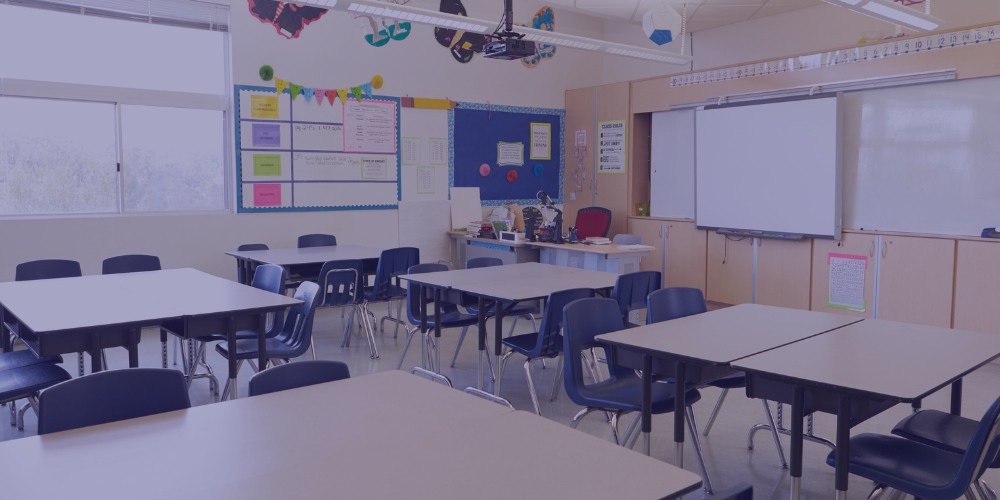Editor’s Note: This blog post is a part of a new ongoing series of posts dedicated to K-12 education policy in Mississippi.
***

By Grace Breazeale I K-12 Policy Associate
As school districts take steps to recover from pandemic learning loss, they should not underestimate how rising rates of chronic absenteeism may hinder this progress. During the 2021-2022 school year, 28% of students in Mississippi public schools were classified as “chronically absent,” indicating that they missed 18 or more days of school. Missing what amounts to at least 10% of the school year is associated with a host of adverse student outcomes, including decreased likelihood of reading on grade level by third grade, decreased likelihood of graduating high school, and increased likelihood of becoming involved with the criminal justice system in adulthood. And while a chronic absenteeism rate of 28% would be concerning in any school year, this number is particularly troubling in the aftermath of unprecedented learning loss caused by the COVID-19 pandemic.
The success of ongoing recovery efforts—including targeted strategies such as high-dosage tutoring and reduced class sizes—are dependent on students’ return to school. Should high rates of chronic absenteeism persist, it will be difficult for Mississippi students to make up ground. Instead of catching up, they could fall further and further behind.
A Sharp Uptick
A chronic absenteeism rate of 28% represents a huge uptick from pre-pandemic years. In 2018-2019—the last uninterrupted pre-pandemic school year—only 13% of Mississippi students were chronically absent, less than half the rate in 2021-2022. Data for the years in between are murky: the Mississippi Department of Education (MDE) did not report absenteeism rates for the 2019-2020 school year, as COVID-19 caused the majority of school districts to shift to asynchronous learning during the last several months of the school year. MDE reported a rate of 21% in 2020-2021, but this figure is likely an underestimate due to the realities of virtual learning for many students throughout the state (i.e., the inherent difficulties in confirming attendance in a fully virtual environment as well as inconsistencies in how districts chose to track attendance). Regardless, it appears safe to assume that the pandemic has contributed to a sharp increase in chronic absenteeism which has persisted even after a return to in-person instruction.
Source: Mississippi Department of Education
The increase in chronic absenteeism during the 2021-2022 school year is a pattern that repeated in districts across the country. This trend may have been exacerbated, at least in part, by student illness and quarantine periods, as COVID-19 continued to pose health risks to students and their families. But other, more avoidable factors likely contributed to increased absenteeism, including lack of student engagement and increased student anxiety. Misconceptions about the importance of attendance could have also played a role: researchers have proposed that the lack of accountability around attendance during the first several years of COVID-19 may have frayed students’ and parents’ attitudes towards the importance of school attendance, with potentially disastrous consequences.
Learning Loss During the Pandemic
Academics and practitioners agree that high rates of absenteeism and student disengagement are among the primary reasons why student achievement plunged during the pandemic. Results from the 2022 NAEP Assessment—a national exam known as “the nation’s report card”—demonstrate that Mississippi students lost ground in all tested subjects (reading and math) and grades (4th and 8th), with the exception of 4th graders holding steady in reading. State test scores have also painted a bleak picture: according to research based on these scores, Mississippi students fell behind by an average of three-quarters of a grade level in math and one-quarter of a grade level in ELA between the 2018-2019 and 2021-2022 school years.
Crucially, the extent of this “learning loss” has been incredibly uneven between school districts and student subgroups, and wide variation in proficiency scores indicate that under-resourced and low-performing students experienced the most academic backslide. This becomes clear as we examine average rates of learning loss by district between 2019 and 2022. In the ten districts with the highest math proficiency scores in 2019 (indicating a baseline of high student achievement before the pandemic), students fell behind by an average of 0.71 grade levels in math. In the ten districts with the lowest math proficiency scores in 2019, students fell behind by an average of 1.17 grade levels. In short, existing pre-pandemic achievement gaps have only continued to grow over the past several years.
Chronic absenteeism rates have a clear correlation with the direction of student achievement. Using statewide accountability ratings (which emphasize student growth and proficiency) as a guide, we find that districts which subsequently earned an “A” had an average chronic absenteeism rate of 25% during the 2021-2022 school year. In contrast, districts that earned a “D” or “F” rating had an average chronic absenteeism rate of 35%. Chronic absenteeism is certainly not the only factor contributing to student achievement, but research demonstrates that it does play a role. When a student consistently misses school, they miss out on large swaths of information that later show up on end-of-year tests.
ESSER Funding and the Promise of High Dosage Tutoring
Post-pandemic data on student achievement have been devastating, but not necessarily surprising. From the beginning of the pandemic, it was clear that students were going to suffer as a result of school closures and a widespread shift to virtual learning. With this in mind, Congress established the “Elementary and Secondary School Emergency Relief Fund” (ESSER) in order to provide school districts with resources to address the impact of the pandemic. Since March 2020, Congress has made three separate investments in this fund. The most recent investment, ESSER III, included an allocation of $1.6 billion for Mississippi school districts. Districts must use at least 20% of their ESSER III funds to tackle learning loss, and they are given flexibility in how they go about this. Some common approaches include implementing high-dosage tutoring programs, hiring academic coaches, or hiring extra teaching staff to reduce class sizes.
High-dosage tutoring is one of the most promising interventions, with multiple evaluations showing that it could give districts the most “bang for the buck” as they spend their recovery funds. But it is not a silver bullet, and recent research has shown that several qualities are necessary in order for high-dosage tutoring to be maximally effective. First, sessions should be at least 30-60 minutes and occur at least three times per week. The same interventionist should work with the same students at each session, and the sessions should follow a logical sequence. Sessions should also take place during school hours, as after-school or summer programs are easy for students to opt out of. Should these conditions be met, students receiving high-dosage tutoring could be back on grade level in a matter of months.
But success is, of course, dependent on student attendance. The parameters of effective high-dosage tutoring—namely, that it must be frequent and follow a logical pattern—mean that missed sessions will necessarily water down the intervention’s effectiveness. Even the most well-designed program will fail if students are chronically absent (in addition to these students falling behind due to missing regular instruction). As we previously noted, students who are academically disadvantaged tend to have higher rates of absenteeism, so the students who need tutoring the most are more likely to miss school as well as their tutoring sessions. Districts must take these realities into account as they decide how to spend ESSER funds. Because the success of learning loss interventions are dependent on school attendance, districts may consider directing funds to help curb chronic absenteeism.
Reducing Chronic Absenteeism
What steps can districts take to increase school attendance and, as a result, heighten the impact of learning loss interventions?
First, they should ensure that schools have strong systems in place to track student attendance, enabling them to flag students who are at risk of becoming, or already are, chronically absent. Once this is accomplished, districts can develop multi-tiered strategies to prevent absences among all students and reduce them among at-risk and chronically absent students. A report out of the Annenberg Institute at Brown University offers a blueprint for what these strategies could look like. A selection of these ideas are outlined in the table below.
| Tier 1: Reaching All Students | Tier 2: Reaching At-Risk Students | Tier 3: Reaching Chronically Absent Students |
|---|---|---|
| Ensure safe and reliable transportation for all students | Establish early-warning indicator systems and follow-up strategies for students who are at risk | Partner with outside agencies and organizations to connect students with resources to mitigate issues that hinder attendance |
| Ensure a safe and welcoming school environment | Establish mentor programs in which at-risk students are paired with an adult mentor | Establish absence intervention teams to holistically respond to factors that drive chronic absenteeism |
| Establish expectations and proactively communicate with parents about their students’ absences |
District and school leaders should evaluate the state of chronic absenteeism among their students, then pursue the strategies that make the most sense for their school populations.
The Danger of Complacency
The pandemic was a shock to the school system, and its effects on students are beginning to come into focus. The impact that the pandemic appears to have had on chronic absenteeism could be just as grievous as the impacts that it has had on student achievement. School districts should consider paying more attention to this factor, as any academic interventions that schools pursue will fall flat if the students are not at school.

